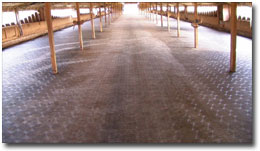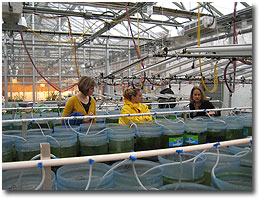Restoring the Chesapeake Bay through Innovation

The Innovative Technology Fund, a partnership between Maryland DNR, the University of Maryland and the Environmental Protection Agency, is continuing to accelerate Bay restoration through the development of new technologies. At the 2007 Chesapeake Bay Program Executive Council (EC) meeting, the State of Maryland and the Environmental Protection Agency (EPA) agreed to promote investments in technologies that could accelerate Bay restoration efforts.
The Innovative Technology Fund is made possible through funding from Maryland’s Chesapeake and Atlantic Coastal Bays Trust Fund and the Environmental Protection Agency (EPA) in partnership with the University of Maryland’s Industrial Partnership (MIPS) and the Mtech Ventures Chesapeake Bay Seed Capital Program (Mtech). Additional technical assistance is provided by Maryland DNR and the Chesapeake & Coastal Service.
“The Department of Natural Resource’s investment demonstrates credible endorsement for job creation and economic development through environmental entrepreneurship.”
– Michael Furbish, Furbish Company
Innovation in Action

A number of projects have been supported under the Innovative Technology Fund:
- Hy-Tek Bio, LLC is working to sequester carbon dioxide and nitrous oxides using enhanced microalgal growth that can also be used in biofuels, pharmaceuticals, cosmetics and other marketable byproducts.
- Manta Biofuel, LLC a company that produces crude oil from algae at a cost that is competitive with traditional petroleum
- PaverGuide, LLC developed and sells a stormwater capture system for use with permeable pavers, the pavement pieces used in sidewalks, parking lots, driveways and crosswalks, for reducing stormwater runoff into the Chesapeake Bay.
- AH Pharma, LLC refining a radiant floor heat technology in chicken houses that decreases ammonia emissions by reducing litter moisture.
- Traffax, Inc., a software company that can reduce vehicle emissions through better traffic data that allows for route diversion during congestion, as well as improved signal operation in urban networks.
- Smart Slope, LLC produces and sells concrete retaining wall modules designed to be planted creating fully vegetated walls helping to diminish heat island effects, as well as reduce stormwater, sediment and nutrient runoff.
- Stancills, Inc. developed a light weight low carbon footprint green roof planting media with improved physical properties that will increase the success and implementation of green roofs.
- Maryland Environmental Plastics, LLC invented biodegradable plastic seed pots uniquely designed to allow for proper root growth for greater plant establishment and restoration in the Chesapeake Bay.
- Blue Wing Environmental Solutions and Technologies, LLC evaluated floating treatment wetlands for the removal of nitrogen and phosphorus in poultry waste lagoons.